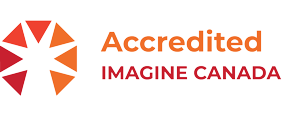By Owen Charters
Over March break, Isabella got to try her hand at engineering.
Volunteers from Tru Grit Engineering showed her and other members of BGC Thunder Bay how to make toy cars. Technically, they were introduced to problem-solving, propulsion physics, mechanics and mathematics. But Isabella summed it up in a much simpler way: “I really loved it because it was really fun.”
Stories like this give life to the rows of numbers that make up the 2017 federal budget and enhance the victory of an incredible $50 million over two years to teach young Canadians to code. This is a huge boost to support Canadians in developing the skills and creativity needed to compete and lead in the global innovation race.
I’m happy to see the government is committed to promoting digital skills for young people and increasing diversity in science, technology, engineering and math (STEM) fields.
Simply put, STEM education is critical to the future success of young Canadians. We currently have a shortage of girls and newcomer, indigenous and low-income youth interested in these subjects. This opportunity gap is costly for society.
Expanding access to STEM fields for underrepresented groups would benefit everyone. Happily, there are many ways to actively strengthen skills development and create pathways to STEM careers for those who risk being left behind.
Introducing children to coding and digital skills early in their lives helps bolster interest in science, technology, engineering and math. Research also shows that adding art to STEM learning programs is like adding an on-ramp to STEM for underrepresented youth. The addition of art increases motivation for all types of learners and brings more diverse opportunities for communication and expression.
Informal STEAM programs (STEM with arts) strengthen creativity and encourage children and youth to develop better life skills and stronger connections to community. These programs also give young people the opportunity to experiment — an important lesson in trying, failing and trying again.
BGC introduces computer skills to children as young as five. As their skill level increases, kids tackle more advanced challenges like web design, digital photography and movie making. These are great ways to discover career interests.
Creating Lego robots, mastering math games and video game design also make STEM subjects more accessible for youth who struggle with academics. Out-of-school programs that help at-risk youth find different ways to be successful boost confidence, which often leads to better results in school.
But don’t just take my word for it. A youth involved in a STEAM program at one of our Clubs said it best: “I’m lucky because sometimes people don’t get the chance to do these types of activities. The purpose is to learn how to engineer so when you are older, you can choose all different types of jobs you want to do.”
By allocating funds to digital skills and STEM education, the 2017 federal budget empowers us to actively reach out to girls, indigenous children, newcomer children and children in low-income situations and reverse the lack of diversity in STEM fields.
This is an opportunity to help prepare young people with 21st century skills and strong, creative minds. And that’s good for all Canadians.

